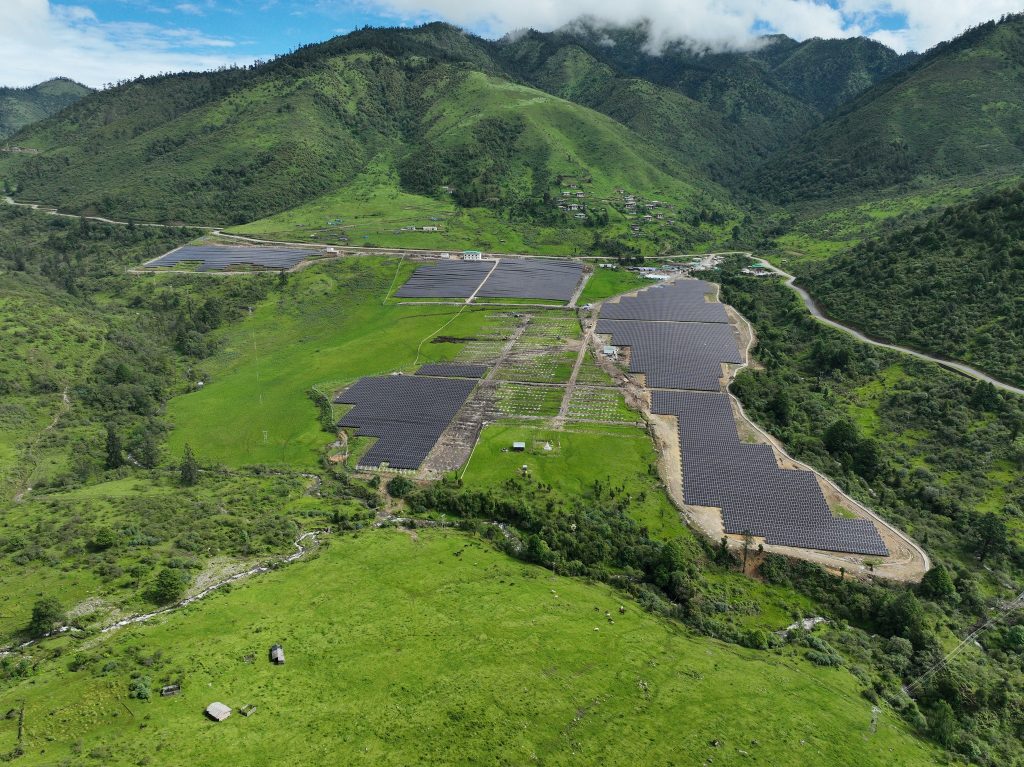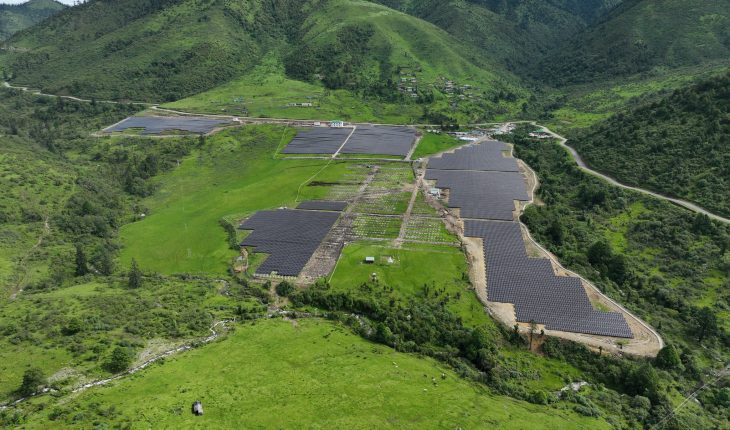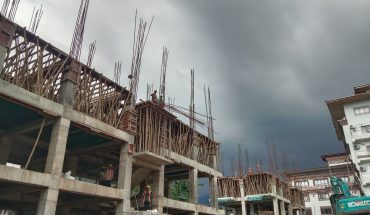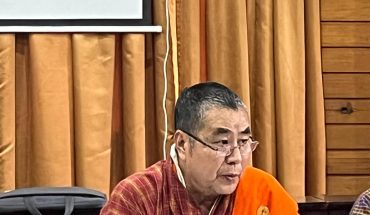
Sephu Solar Project, Bhutan’s first utility scale solar plant, marks shift toward energy diversification
DAWA ZANGMO | Thimphu
hutan is taking a historic step toward reshaping its energy sector with the construction of the Sephu Solar Project, the country’s first utility scale alternative renewable power plant.
The project represents a significant milestone as Bhutan seeks to diversify from its near total reliance on hydropower and build resilience against the growing risks of climate change.
The solar photovoltaic (PV) power plant, located in Sephu Gewog in Wangdue Phodrang, will generate between 22 to 23 megawatts (MW) of clean electricity.
Once operational in early 2025, it will be the first commercial-scale solar project in Bhutan, supplementing the country’s hydropower-driven grid and making history in the process.
For decades, hydropower has dominated Bhutan’s energy system. However, the dependency on rivers has also created challenges.
Hydropower output fluctuates dramatically with the seasons. During the dry winter months, when water levels in Bhutan’s rivers fall, electricity generation drops significantly.
To meet domestic demand during these periods, Bhutan must import around 300 million units of electricity annually from India.
This reliance on seasonal imports not only drives up costs for consumers but also adds environmental pressure.
The Asian Development Bank (ADB), which is supporting the project, noted that the transition to solar will help reduce these imports while also strengthening energy security.
“It is important because we need to diversify from the hydropower into the solar power because it will curtail the import of electricity from India,” said Sonam Zam, ADB Project Officer.
The Sephu Solar Project is backed by more than USD 18 million in grants and loans from the ADB, while the Government of Bhutan has committed an additional USD 1 million to make the initiative a reality.
Originally envisioned to generate 22–23 MW, the plant will initially contribute 17 MW of electricity to Bhutan’s grid.
Despite the slight reduction, officials believe this marks a crucial step toward strengthening energy independence and showcasing alternative renewable solutions in Bhutan.
“With the diversification of energy into other alternative renewables such as solar, we will be able to become self-sufficient and I do see a future where Bhutan can be able to meet all its domestic requirements from the renewable energy sector,” added Sonam Zam.
The experience gained from the Sephu project is also expected to pave the way for similar projects in other parts of the country.
Energy experts suggest that pilot projects like Sephu are essential for building technical capacity, refining implementation strategies, and ensuring long-term sustainability of renewable diversification.
The announcement of Bhutan’s first large-scale solar project has been met with cautious optimism among citizens.
While many are aware of the country’s dependence on hydropower, the idea of solar as a complementary energy source is new to most Bhutanese.
“I think this is a very good step for Bhutan,” said Dorji Wangchuk, a shopkeeper in Wangdue town. “In winter, we always hear about power shortages and imports. If solar can help reduce this problem, it will benefit all of us.”
For farmers in Sephu Gewog, where the solar plant is being built, the project also represents new opportunities.
“Our village is now part of a project that will be known all across Bhutan,” said Pema Deki, a farmer from Sephu. “We hope this will also bring development to our community, like better roads and services.”
Younger Bhutanese, particularly those studying engineering and energy systems, see the project as a chance to learn and grow.
“For students like us, this is exciting,” noted Karma Dorji, a final-year engineering student at the College of Science and Technology. “Hydropower has been the only thing we studied in depth, but now solar will open new fields for us to explore.”
Climate change has posed increasing threats to Bhutan’s hydropower sector. Glacial retreat, erratic rainfall patterns, and changing river flows have raised concerns about the long-term reliability of hydropower generation.
By integrating solar power into the mix, Bhutan aims to reduce its vulnerability and build resilience.
Sonam Zam highlight that the Sephu Solar Project is not designed to replace hydropower but to complement it. Together, hydropower and solar can form a more diversified electricity generation system, reducing risks during seasonal shortages.
The ADB and Royal Government of Bhutan both view Sephu as a stepping stone toward a future where renewable energy sources beyond hydropower play a key role in the nation’s energy independence.
The lessons learned here will inform future investments in solar and possibly other renewable sources, such as wind.
As Sonam Zam emphasized, “The experience that is gained from this project will certainly help benefit the work further in other projects in the country in the future.”
The Sephu Solar Project, though small in scale compared to hydropower giants, is seen as the beginning of a new chapter in Bhutan’s energy story.
For ordinary Bhutanese, the hope is simple: cleaner, more reliable energy that reduces costs and strengthens the country’s ability to stand on its own.





